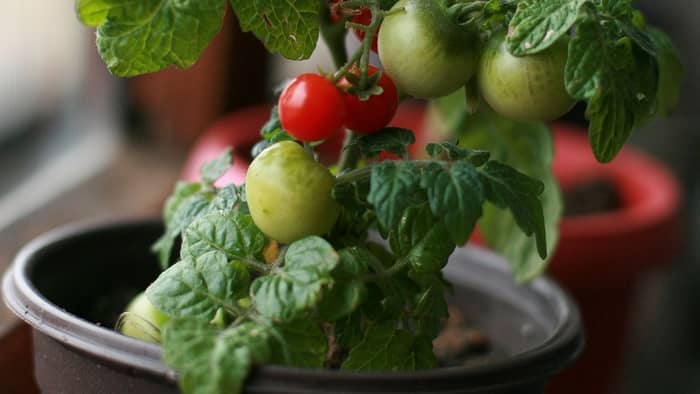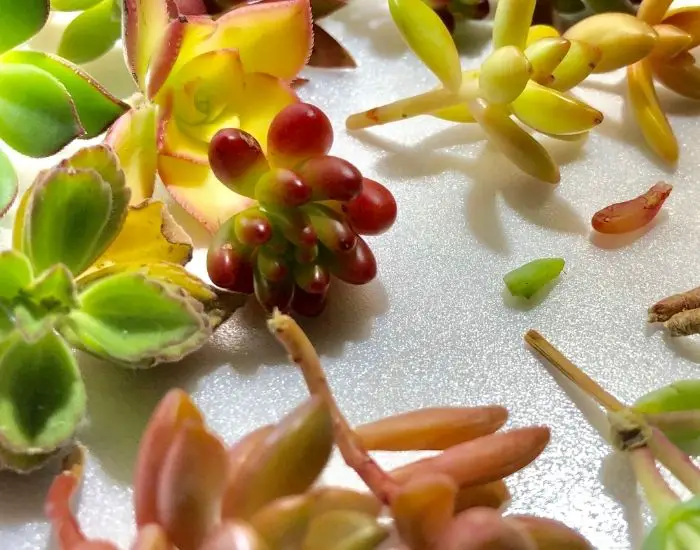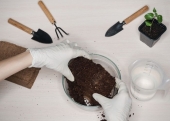You are asking yourself when to start tomatoes indoors? If you want to find out, keep reading this article! Why wait until May for fresh tomatoes? Many home growers wait until May before planting their seedlings.
But there’s a big difference between growing your fruit and vegetables and starting them indoors. When it comes to growing tomatoes, waiting until May is a big mistake. You’re better off starting seeds indoors months before Mother Nature starts to feel springy.
Not only will it help your tomatoes germinate earlier, but it will give you more time to properly care for your plants and ensure they get the best possible start.
Growing Tomatoes From Seed
https://indoorgardentips.com/when-to-start-growing-tomatoes-from-seed-indoors/ Growing tomatoes from seed is a fun and easy project. Tomatoes are one of the easiest crops to grow. You only need to provide a good amount of sunlight, heat, and water. The more sunlight and water you give to the tomato seedlings, the bigger and healthier they become.
When you are growing tomatoes from seed, you need to remember that the seeds need a lot of care. For them to sprout, they must be kept moist. Once the sprout appears, you need to keep the soil damp to prevent the seedling from drying out. You need to watch the seedling carefully. If it gets too hot or too cold, it will wither away and die.
When To Start Tomatoes Indoors?
Before you start growing tomatoes indoors, take note of the three stages of tomato growth (starting, budding, and full). When you plant seedlings, it is important to understand that they will grow differently depending on how they are treated and cared for.
In the first stage, tomatoes need all the warmth possible, especially in the first two weeks, because the plants will be growing rapidly. Temperatures should be kept between 65 and 70 degrees. They should be grown under lights with temperatures ranging from 50 to 75 degrees.
Make sure the seedlings have enough fertilizer, as they need it to make strong roots.
How To Harvest Tomatoes Indoors?
To harvest tomatoes indoors, you need to start by finding a space that’s bright, dry, and protected from freezing temperatures. After that, the actual picking needs to take place in a very specific way. Most people think about tomatoes as a fruit—but they’re the fruit of a plant called a Solanum.
Tomatoes belong to the nightshade family of plants (along with potatoes, eggplant, peppers, and more). If you’re familiar with tomatoes and nightshades, you might know that nightshades require a lot of sun. That means, to grow tomatoes indoors, you’ll need to provide a lot of natural light.
Why Tomatoes Are The Best Indoor Plants
Tomatoes are perfect for any indoor garden because they have a short lifespan but require little care. They are easy to grow indoors and produce loads of delicious tomatoes every year. So if you need a quick, simple, and easy way to make your indoor space look lush and beautiful, then consider growing a tomato plant.
Not only will it give your space a fresh scent, but it will also provide many nutritious food items to nourish you. A case of primary malignant fibrous histiocytoma with bone metastasis presenting as a left inguinal mass.
What Month Do You Start Tomato Seeds?
To begin growing tomatoes, start seeds in the garden in April or May. Tomatoes need full sun, rich, fertile soil, and regular water. Be sure to choose a variety that is hardy and produces a lot of fruit. You can plant them directly into the ground or start them in seed trays. Seeds need to be transplanted after the second set of leaves emerges.
What Seeds Should Not Be Started Indoors?
Some seeds are better off not being started indoors. This includes many vegetables like broccoli, cauliflower, radishes, beans, peas, cucumbers, eggplants, peppers, and squash. These seeds need to grow outside and get a head start.
Once they’ve developed their root system, they’ll be better able to handle the elements, and they’ll have better flavor and nutrition. These seeds include some of the most common food crops grown in gardens across America.
Should I Soak Tomato Seeds Before Planting?
Soaking tomato seeds in water is a tried-and-true method for increasing their germination rates. The purpose of this process is to soften the outer shell of the seed and make it easier to break open. Once this shell is broken, you’re free to plant the seed.
Tomato seeds are naturally dormant—but because of the hard shell, they need a lot of energy to start growing. Soaking the seeds in water activates this dormant energy.
Can You Start Tomato Seeds In Potting Soil?
Yes! The best method for growing tomatoes is not only to grow them in a pot but to use potting soil. Potting soil is specially formulated for starting seedlings in pots.
This means that potting soil is designed to provide the right level of nutrients to help seedlings grow to a healthy size without any problems. There are lots of different types of potting soils that can be used to grow tomatoes.
Grow Tomatoes Indoors vs. Grow Tomatoes Outdoors
Growing tomatoes is easier if you grow them indoors. While growing tomatoes is not as easy as growing some of the other products that people typically grow outdoors (think cucumbers, watermelons, and peppers), it can be done.
But the key to growing tomatoes successfully indoors is the variety of plants that you select. Tomato plants are one of the easiest plants to grow indoors because of their low-maintenance requirements. Even a large variety of tomato plants require little maintenance to remain healthy and productive. They also require very little water.
However, if you’re going to grow tomatoes indoors, you’ll have to pay close attention to the amount of light your plants receive and the amount of water that they get to avoid having weak or unhealthy growth.
Final Words On When To Start Tomatoes Indoors!
Most home gardeners wait too long to plant tomatoes. You can start tomato seeds indoors several weeks earlier than you would normally plant them. The trick is to grow them at a slow, steady rate so you don’t end up with bushy plants that outgrow their space.
Start them indoors about three weeks before you plan to plant them outside. You can use regular containers, such as old flower pots or trays.
Or you can use a seedling starter system, which includes a plastic pot and growing medium, to help keep the roots cool and moist, which is especially important when you’re starting seeds indoors.







